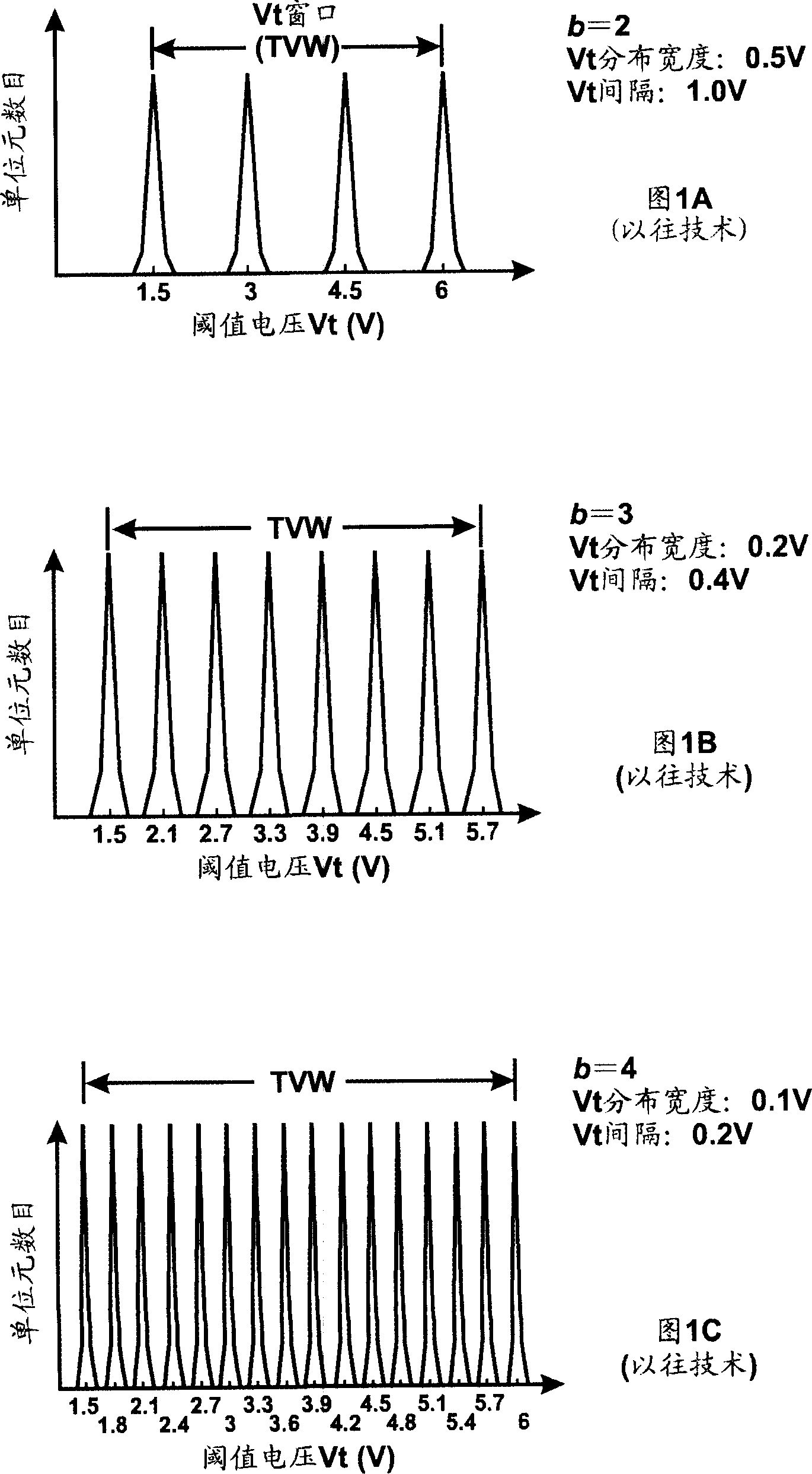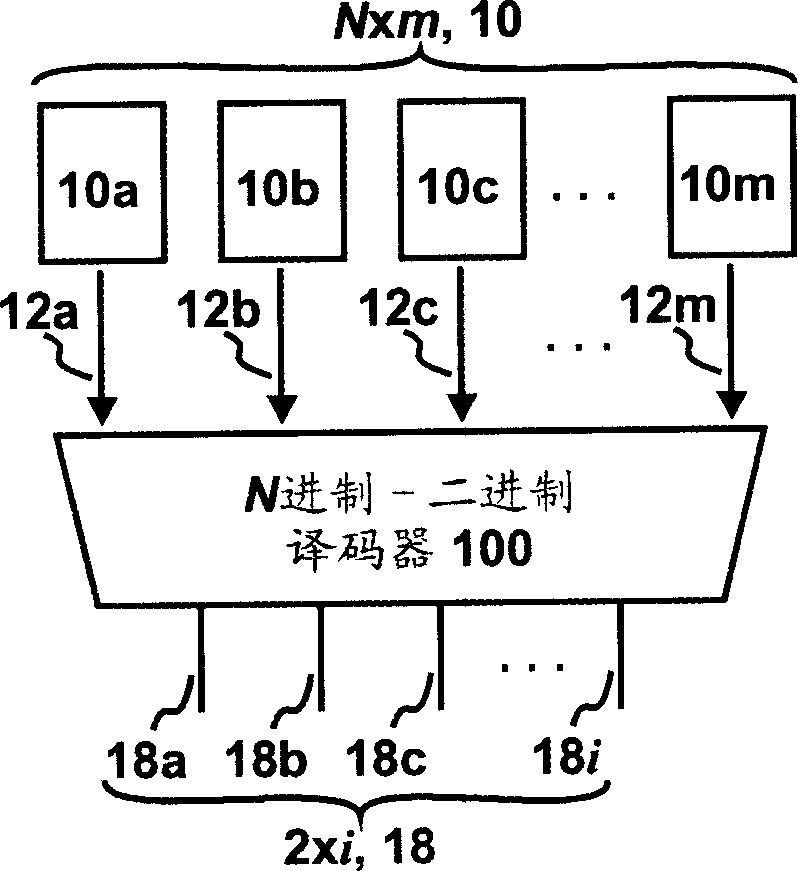Non-integral bit system
A non-integer, positive integer technology, applied in the field of data storage and transmission systems, can solve problems such as large research and development costs, delays in market entry time, etc.
- Summary
- Abstract
- Description
- Claims
- Application Information
AI Technical Summary
Problems solved by technology
Method used
Image
Examples
Embodiment Construction
[0036] Figure 2A Represents an N-ary non-integer bit parallel input system. In a parallel input system, multiple units are accessed simultaneously. Typical parallel-input systems include semiconductor memories such as Flash memory, EPROM, EEPROM, MRAM, FeRAM, DRAM, SRAM, variable resistance memories such as phase-change memories and Ovonyx unified memories (OUM), mask-programmable memories, diode memories, inverse Fuse memory, etc. Semiconductor memories are generally based on memory arrays, thereby being able to provide parallel access. Figure 2A The N-ary non-integer bit parallel input system contains a word 10 and an N-ary-binary decoder 100. The word 10 contains m n-ary units 10a, 10b...10m, and each unit has N states (the expression N×m represents m n-ary units or signals). Physical characteristics that can be used to represent a state include: threshold voltage, charge, current, voltage, resistance, optical transmittance or reflectance, thermal conductivity, electr...
PUM
 Login to View More
Login to View More Abstract
Description
Claims
Application Information
 Login to View More
Login to View More - R&D
- Intellectual Property
- Life Sciences
- Materials
- Tech Scout
- Unparalleled Data Quality
- Higher Quality Content
- 60% Fewer Hallucinations
Browse by: Latest US Patents, China's latest patents, Technical Efficacy Thesaurus, Application Domain, Technology Topic, Popular Technical Reports.
© 2025 PatSnap. All rights reserved.Legal|Privacy policy|Modern Slavery Act Transparency Statement|Sitemap|About US| Contact US: help@patsnap.com



